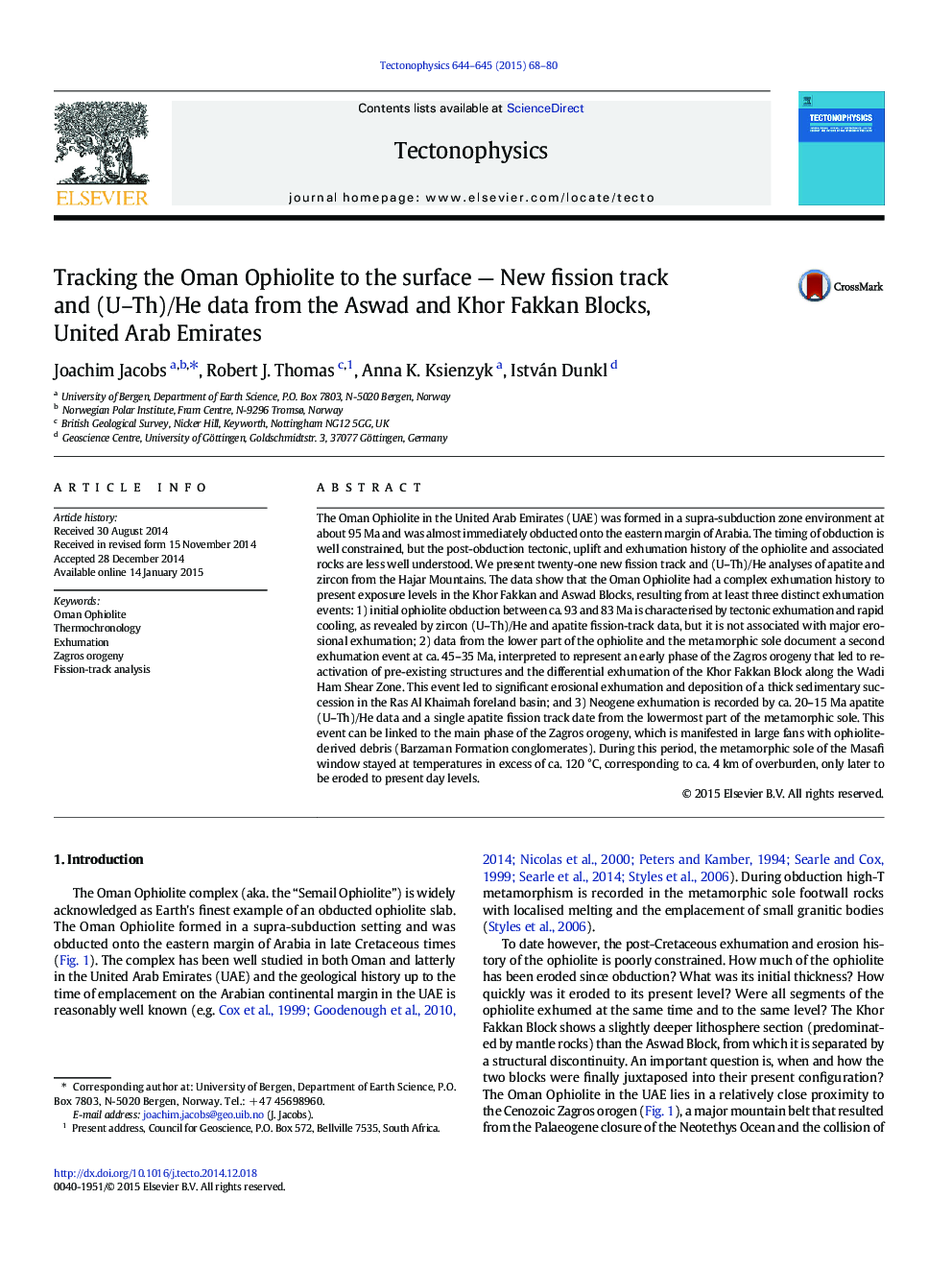| کد مقاله | کد نشریه | سال انتشار | مقاله انگلیسی | نسخه تمام متن |
|---|---|---|---|---|
| 4691743 | 1636748 | 2015 | 13 صفحه PDF | دانلود رایگان |

• Thermochronological data indicate a two-stage exhumation history after initial obduction
• Cretaceous obduction of the Oman Ophiolite was not associated with large amounts of erosional exhumation
• Sole of the ophiolite stayed at temperatures above 120 °C until the Neogene, indicating up to 4 km of overburden
• Differential exhumation of the ophiolite along Wadi Ham Shear Zone is a result of early Zagros tectonic overprint
• Present rugged topography is at least in part related to Neogene (Zagros) exhumation
The Oman Ophiolite in the United Arab Emirates (UAE) was formed in a supra-subduction zone environment at about 95 Ma and was almost immediately obducted onto the eastern margin of Arabia. The timing of obduction is well constrained, but the post-obduction tectonic, uplift and exhumation history of the ophiolite and associated rocks are less well understood. We present twenty-one new fission track and (U–Th)/He analyses of apatite and zircon from the Hajar Mountains. The data show that the Oman Ophiolite had a complex exhumation history to present exposure levels in the Khor Fakkan and Aswad Blocks, resulting from at least three distinct exhumation events: 1) initial ophiolite obduction between ca. 93 and 83 Ma is characterised by tectonic exhumation and rapid cooling, as revealed by zircon (U–Th)/He and apatite fission-track data, but it is not associated with major erosional exhumation; 2) data from the lower part of the ophiolite and the metamorphic sole document a second exhumation event at ca. 45–35 Ma, interpreted to represent an early phase of the Zagros orogeny that led to reactivation of pre-existing structures and the differential exhumation of the Khor Fakkan Block along the Wadi Ham Shear Zone. This event led to significant erosional exhumation and deposition of a thick sedimentary succession in the Ras Al Khaimah foreland basin; and 3) Neogene exhumation is recorded by ca. 20–15 Ma apatite (U–Th)/He data and a single apatite fission track date from the lowermost part of the metamorphic sole. This event can be linked to the main phase of the Zagros orogeny, which is manifested in large fans with ophiolite-derived debris (Barzaman Formation conglomerates). During this period, the metamorphic sole of the Masafi window stayed at temperatures in excess of ca. 120 °C, corresponding to ca. 4 km of overburden, only later to be eroded to present day levels.
Journal: Tectonophysics - Volumes 644–645, 16 March 2015, Pages 68–80